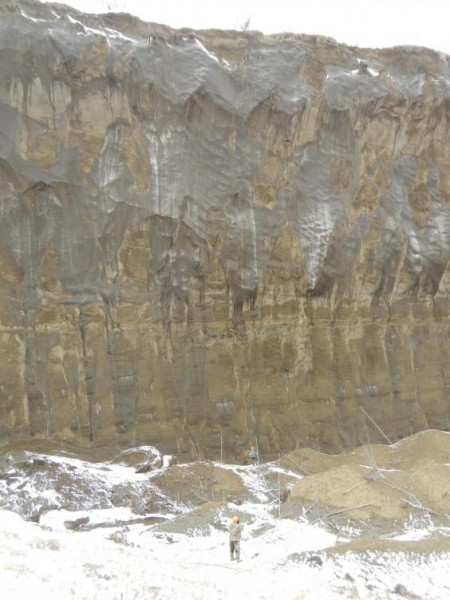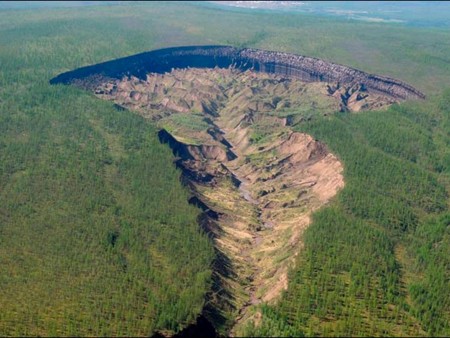June 27, 2016 – Take a look at the picture below. It is the Batagaika Crater in Siberia and is known as the “Gateway to the Underworld” by the locals. It appeared suddenly 25 years agoa in frozen Siberia and has been widening at a rate of 20 meters (65 feet) per year. The crater is a thermokarst feature. It extends more than a kilometer (0.6 miles) and is 90 meters (close to 300 feet) deep.
Thermokarst processes are happening with greater frequency both in Siberia and in Canada’s far north. These are land surface features formed when permafrost thaws. Usually the appearance causes pitting and the formation of thermokarst lakes which fill with water from the melting ground. But in the case of Batagaika, the crater is significantly larger than the norm.
The cause: permafrost melt leading to land subsidence.
The underlying cause: global warming and deforestation.
The fly in the ointment: the more melt the greater release of greenhouse gases which feeds overall atmospheric warming and more melting permafrost.
The walls of the exposed crater (see image below) have uncovered geological history dating back over 200,000 years to a time when Earth’s atmosphere was even warmer than today. Cluttered on the floor and along the walls of the crater are remains of mammoths, musk ox, horses and ancient trees. There is even evidence of subterranean ice deposits some as high as 20 to 30 meters (approximately 65 to 100 feet).

To describe Batagaika as a natural occurrence would be incorrect. Humans have had a lot to do with its appearance. Back in the 1980s the overlying trees that kept the soil and underlying layers cool were cut down by locals. The exposed surface was subject to increased solar radiation, rainfall and wind erosion. Summer heat penetrated the ground over time and voila, a crater opened up.
The appearance of Batagaika in Siberia joins other permafrost induced land subsidence. Back in 2014 I posted an article on this site describing a 30 meter (100 feet) wide sinkhole that opened in the Yamal Peninsula which was blamed on a sudden eruption of methane from melting permafrost.
Permafrost and global warming is a bad mix, described by some scientists as a time bomb waiting to blow. With 24% of the northern hemisphere classified as permafrost and with Arctic land temperatures continuing to rise, expect many more Batagaika craters and Yamal Peninsula sinkholes in the future.









